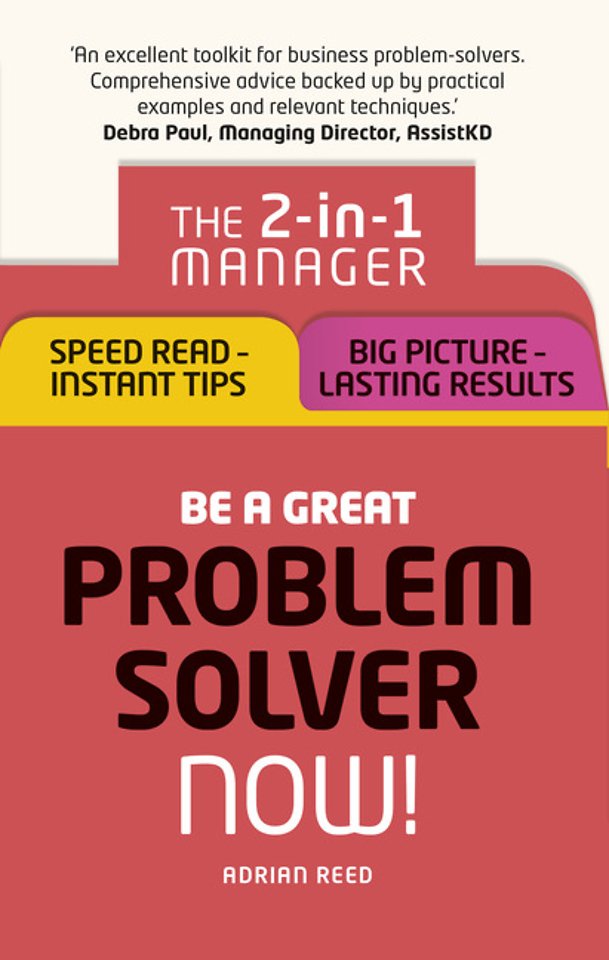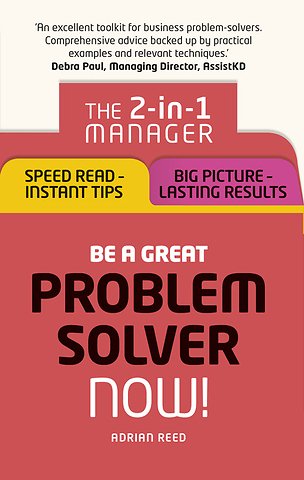Be a Great Problem Solver – Now!
The 2-in-1 Manager: Speed Read - Instant Tips; Big Picture - Lasting Results
Samenvatting
Discover how to Be a Great Problem Solver - Now!
This 2-in-1 guide is designed to help you solve problems in an instant, whilst giving you the deeper knowledge to ensure long-lasting results.
With the unique 2-in-1 approach, you can learn your way. Use the seven Speed Read tips immediately, then take your time exploring the Big Picture chapters.
· Analyse business problems and opportunities objectively and effectively to generate a range of possible solutions
· Avoid falling into the trap of selecting the first, easy solution
· Understand how to work collaboratively with co-workers and stakeholders
· Use a one-page ‘Problem Canvas’ to scope out and explore a problem
As an ambitious manager, you need the right information at the right time to help you advance in your career. The 2-in-1 Manager will ensure you improve and succeed in business, right now and in the future.
Specificaties
Inhoudsopgave
Anderen die dit kochten, kochten ook
Rubrieken
- cadeauboeken
- computer en informatica
- economie
- filosofie
- flora en fauna
- geneeskunde
- geschiedenis
- gezondheid
- jeugd
- juridisch
- koken en eten
- kunst en cultuur
- literatuur en romans
- mens en maatschappij
- naslagwerken
- non-fictie informatief/professioneel
- paramedisch
- psychologie
- reizen
- religie
- schoolboeken
- spiritualiteit
- sport, hobby, lifestyle
- thrillers en spanning
- wetenschap en techniek
- woordenboeken en taal







